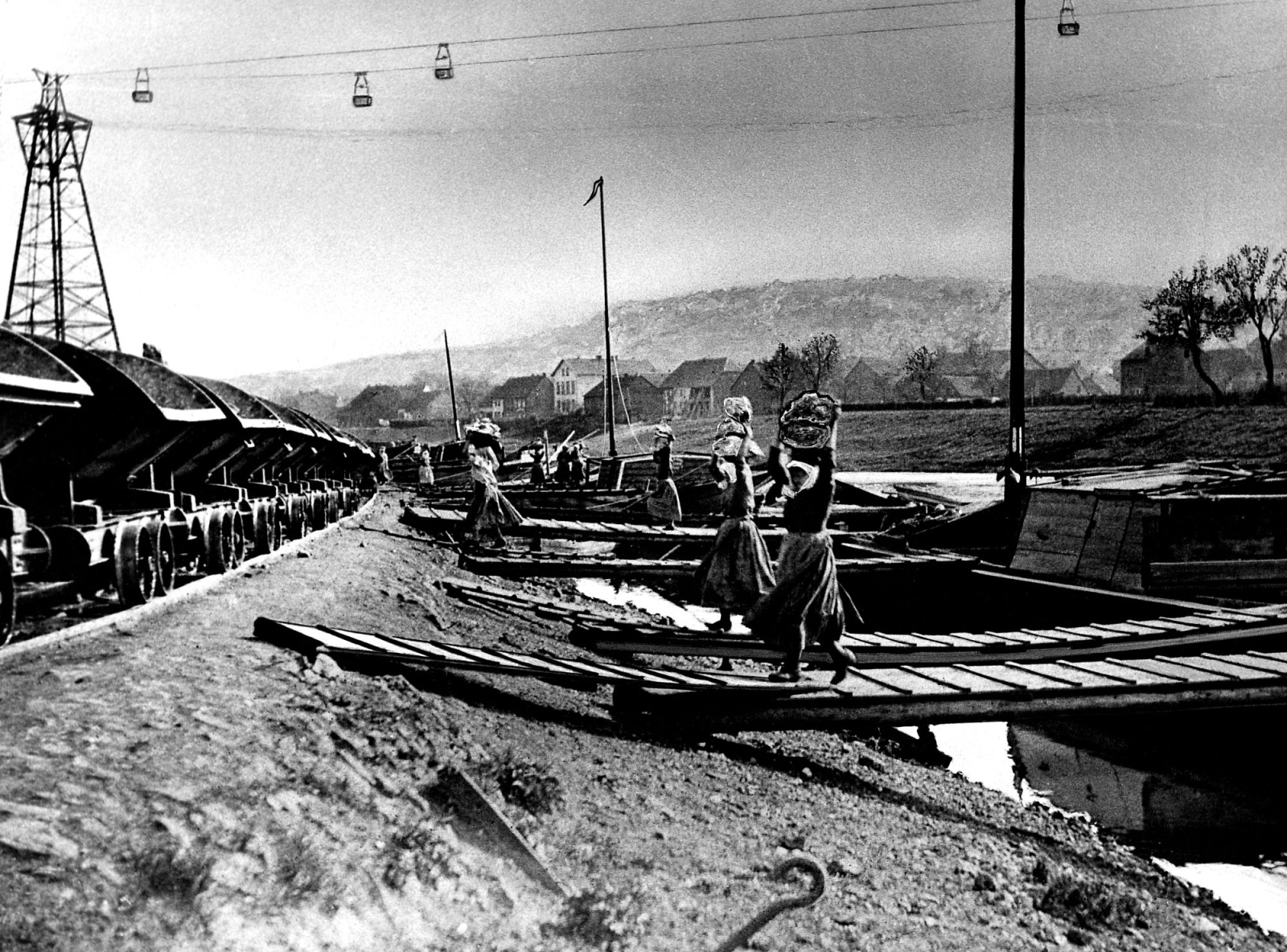
1895ca. Erzengel GE 004 Saarstahl Archiv kompr
Copyright: Saarstahl-Archiv
Date
around 1895
Material
Reprint
Owner
Saarstahl-Archiv
Description
The origins and history of the Völklingen Ironworks are fundamentally linked to the mining of hard coal and ferrous ore. For pig iron production, coal was processed into coke, which was mixed with the ore in the blast furnaces and used as fuel. Minette ore from Lorraine and Luxembourg was of major importance before the import of ore with a higher iron content from all over the world to Völklingen began in the early 1960s. It came from countries such as Sweden, India, Brazil, South Africa and Australia.
The minette was initially delivered by ship. While the ironworks itself was largely a male domain, the job of unloading the iron ore from barges into the wagons of the plant’s own narrow-gauge railway was undertaken by woman and girls from the surrounding area. As the photograph shows, this was done entirely by hand. The female workers were known as the Erzengel – which means ‘archangels’ in German but also sounds like "ore angels". They performed arduous physical labour, carrying a weight of some 30 to 35 kilograms in baskets on their head, around 170 to 200 times a shift. Aged in the main between 14 and 20, they earned at most three-quarters of the wages paid to the men working in the ironworks. It was therefore good business for ironworks owners in the Saar region to hire female labour for such undesirable work. At the end of the 1890s, a steam crane was brought in to unload the ore.
The cableway pictured at the top of the photograph was used to transport slag to a slag heap on the other side of the Saar River. On the journey back to the ironworks, the wagons carried coal from the nearby Hostenbach mine.
